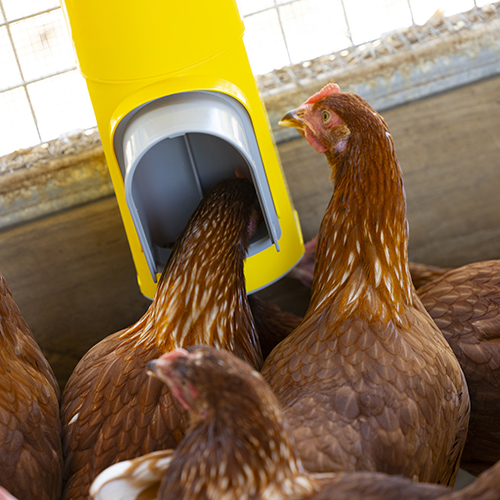
After years of providing chicken supplies for lifestyle farms and farming businesses, we know how many rural people like to keep chickens. If you’re starting your feathered journey or contemplating upgrading your chook run, we put together the ultimate guide about how to make a chicken coop.
Use these tips to guide your design. Every chicken coop varies depending on the breed of the birds you keep, the size of the flock and where you live. The aim is to build a structure that provides shelter, protects the birds from heat, cold, predators and drafts, and stops them from escaping. As a side note, chickens are territorial. If they like their coop, they won’t actually want to leave.
Your birds need to keep dry, so high ground is ideal for coops to prevent flooding and reduce mud and moisture problems. If you don’t have suitable ground for the coop, you’ll need to build an elevated coop.
Placing your coop close to your house or in an area with high traffic will also help to deter predators. You may want to clear any plants or trees close to the coop that could also shelter predators.
Finally, chickens need plenty of sunlight to encourage egg-laying. They also need shade in the summer when it gets very hot, so factor these considerations into choosing the location for your coop.
The general rule of thumb is you need a minimum of one square metre of outdoor space for each bird in your flock. You’ll also need to check with your local council about any rules for minimum total outdoor space. If you have limited outdoor space, your coop should have one square metre of space for each bird.
Chickens also need vertical space in the coop. They naturally roost in places like trees where they’re safer from predators. The larger your flock, the more vertical space you’ll need for roosting bars. You’ll need approximately 25 cm of roosting bar space per chicken, and the lowest bar should be approximately 50 cm off the ground and above the nesting boxes.
To keep your chickens healthy and safe, your coop needs to be structurally sound and have good ventilation. Good airflow is essential for minimising disease. You should have approximately 20% of the total wall space as ventilation located above the roosting areas.
It will also need space for nesting boxes, feeding and drinking areas. Be generous with space, as overcrowding causes problems such as more fighting. If this happens, the birds lower in the pecking order may not get enough to eat and drink.
You’ll need a minimum of one nesting box for every three hens in the flock. Base the size of the boxes on the breed of your birds. You’ll need to put bedding in the boxes with hay or similar materials so the eggs don’t break. If your chickens don’t have access to dry ground for dust bathing, consider adding some sand boxes to the coop for health and hygiene.
With the considerations listed above, pick a plan for your chicken coop. There are many plans available for free online, so find one that suits you best. Simple coops are easy to build, even if you have little experience. Take your plans to your local home improvement store to get the right materials for the build, including fencing materials and chicken wire for the run.
Build your coop following the plan, put up your fences, and create a secure run with chicken wire. Visit our chicken supplies page for all the accessories you’ll need, including feeders and drinkers. We have a range of options for different flock sizes.
Taking the time to build and accessorise your coop properly will save you time and money by keeping your chickens happy, healthy and safe. And they will reward your efforts with lots of tasty eggs.
If you want more information or to view our products, visit us at the upcoming Field Days. We’ll be at the Field Days in Northland, Central Districts and Christchurch throughout March and April.




Bainbridge Vet New Zealand© 2024 | Site by MRD Web